Logan Webb enters the 2023 season in a rather strange spot. The Giants’ ace retained his outstanding level of run prevention last season and boosted his innings total, and yet if we look at overlord Nick Pollack’s preseason SP rankings of 2022 and 2023, we’ll see that Webb has fallen from tier 3, number 21 overall in 2022, to tier 5, number 30 in 2023.
This is not a shot at those rankings. In fact, I’m using Nick’s tangible gap to illustrate what is an industry-wide phenomenon. Webb did the two things it seems as though we wanted him to, in order to sustain growth, and remain as one of the more reliable arms in the game, yet we’re all fading him in a little bit, why is that?
It all comes back to the slider-sinker combo, his bread and butter, and that’s what we’ll discuss today, but first things first.
We purposely left out that last season Webb experienced a drastic decrease in strikeout percentage, coming down from 26.5 in 2021 to 20.7 in 2022, and also that his sinker got crushed.
When it comes to a pitcher’s arsenal, everything is connected, and most of the time you’ll look to understand an issue, and find a connection you hadn’t even thought about, and that’s kind of what happened here. So let’s work it step by step.
How did we get here?
The first thing that changed with Webb in 2022 was that the Giants’ right-hander struggled to command his primary pitch (the sinker).
Let’s have a look at his sinker heatmap from 2021:
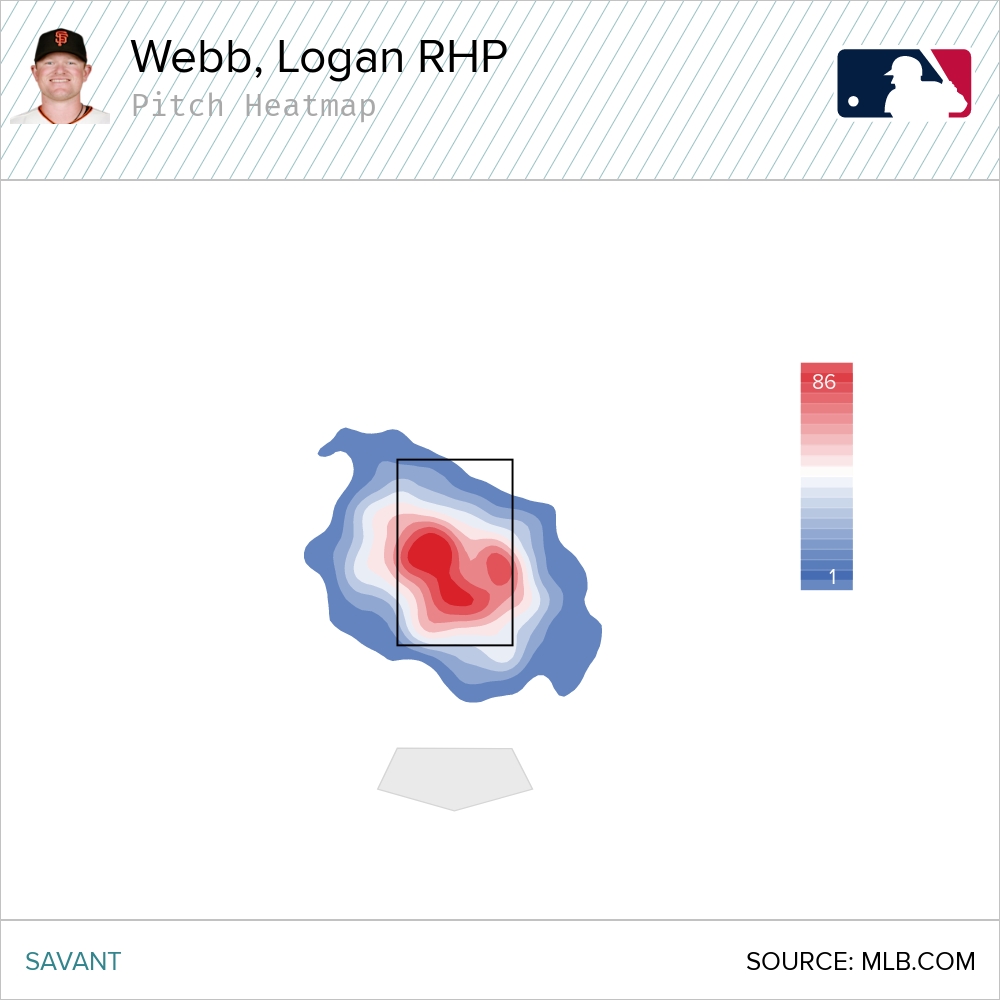
Now 2022:
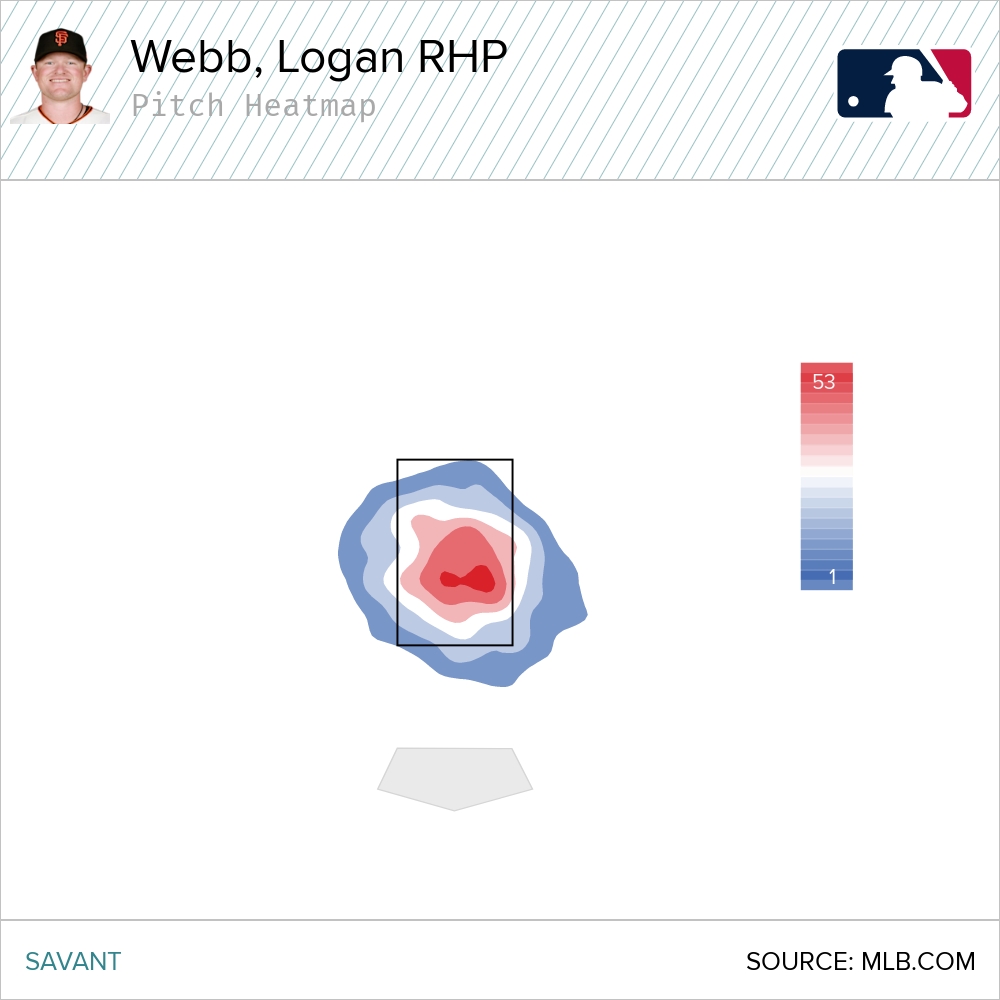
As I started writing this article, this was one of the first things I came across that caught my eye, and you may look at those two graphs, and make the same assumption that yours truly did. Which was that Webb was struggling to get in on right-handers, which is a normal objective for sinker-heavy pitchers, to pound that same-handed hitter inside, and well, that is not the case.
Turns out, if we only look at sinkers against right-handed batters, the pattern was basically the same.
Here is 2021
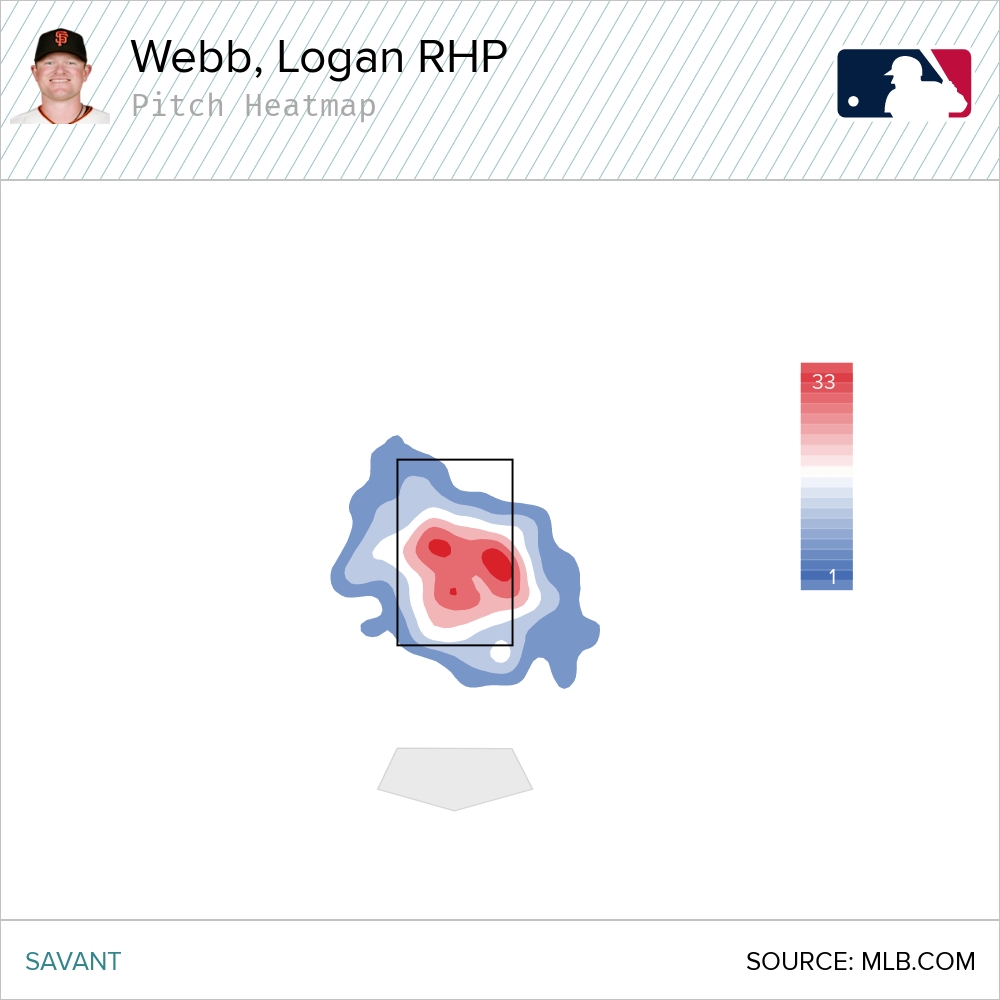
Now here is 2022:
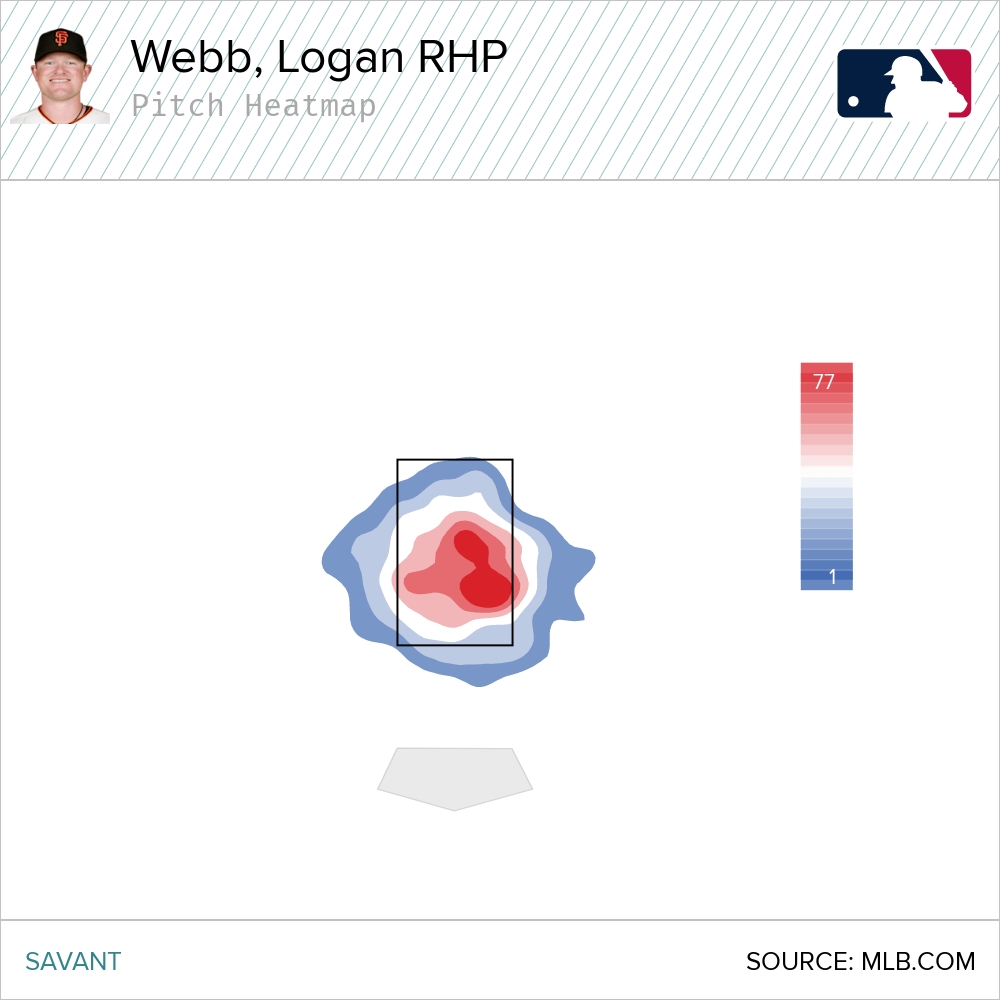
In both campaigns, Webb stayed away on righties for the most pattern, and the results back up that theory, as he gave up a .332 wOBA on sinkers to righties in 2022, a little up from the .310 mark of the prior year, but nothing that directly affected his dominance on righties, and his xwOBA was nearly identical, at .323 and .320, respectively.
What got Webb in trouble was his inability to paint the outside corner on sinkers against left-handed batters. Let’s check out that heatmap for 2021:
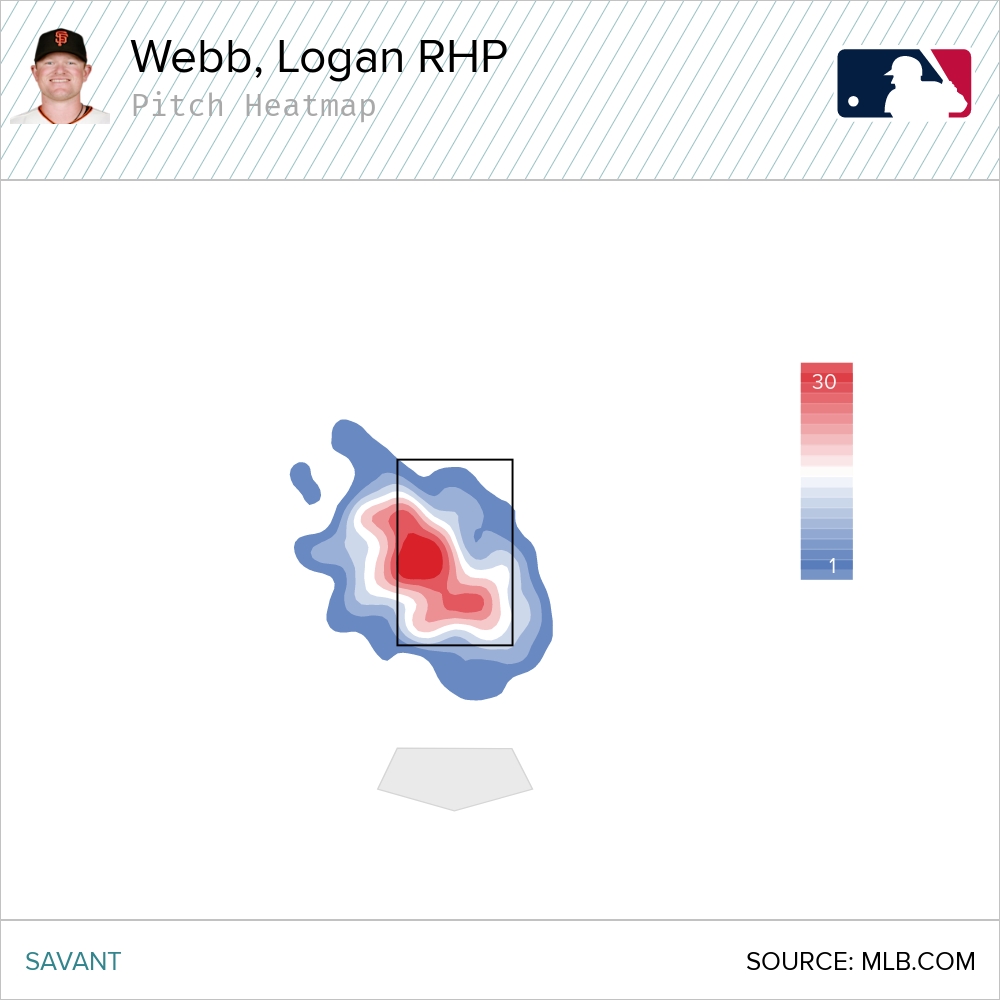
Now in 2022:
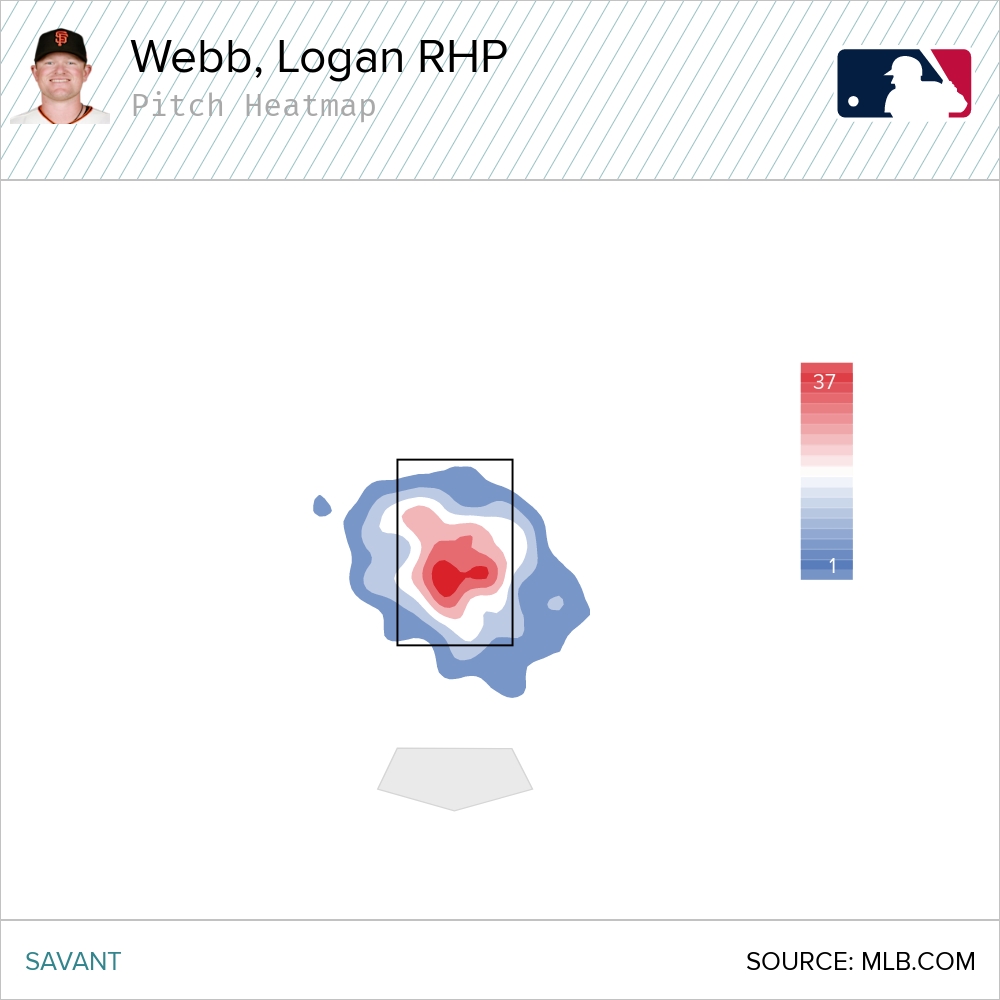
The exact response by Going Deep manager, Adam Sloate, as I showed him this graphic isn’t appropriate for this article, but you can probably guess it. Webb simply shoved sinkers right down Broadway against lefties, and he got punished for it, allowing a whopping .517 SLG, and .412 wOBA on the pitch.
The only reason why lefties didn’t punish Webb furthermore was his changeup, which experienced similar success, even with increased usage, going from 32.8 to 39.4 percent from 2021 to 2022, thus further distancing itself as Logan’s primary pitch against southpaws.
Now that we got that out of the way, so ok, the sinker wasn’t as sharp as in 2021, still, that doesn’t quite explain the steep dropoff in whiffs, but trust me, it is all connected.
One of the differences in hard-hit rate from the Baseball Savant version to the Pitcher List version is that we measure it in terms of hard-hit balls (95 MPH or greater / Total Plate Appearances, whereas Savant divides it by batted ball events, and this can lead to some discrepancies, so it is an important piece of information to keep in mind when doing your research. As far as Logan Webb goes, this particular nugget helps explain a pattern.
Looking at his sinker and changeup, and the changes from 2021 to 2022, the pattern was similar. His sinker’s hard hit over at Savant went from 42 to 47 percent, and over here at Pitcher List it went from 33.3 to 37.9 percent. The changeup went from 38.5 tot 42.3 at Savant, and here at Pitcher List from 27.2 to 29.2.
Now looking at the slider, which was Webb’s primary strikeout pitch in 2021, the change wasn’t kind so linear. So over here at Pitcher List, the hard-hit rate on the breaking ball slightly increased from 15.1 in 2021 to 16.7 in 2022. Now, keep in mind, Webb upped his slider usage from 28 to 33 percent.
As we head over to Baseball Savant, the hard-hit rate actually went down, rather significantly I might add, as it ended 2021 at 31.8 percent, and in 2022 it came in at 24.4 percent.
The explanation for this is rather simple, Webb started throwing his slider more, and as it returned much fewer whiffs, due to a small location change we’ll get to in a minute, the number of batted ball events increased dramatically from 88 in 2021 to 193 in 2022, without the linear growth in hard contract. Yes, batters were getting to the pitch more often, but also they were making soft contact, which is how we end up at a.329 SLG on the pitch in 2022.
Check out the difference in the launch angle chart on putouts on sliders. Here we have 2021:

Now here is 2022:

Now, one may argue that there was nothing wrong with Webb’s slider in 2021, and in fact, there wasn’t. His breaker returned an even lower .231 SLG, and also served as a strikeout pitch, so why the change?
To make up for poor command of the sinker
Now, one can’t argue this with certainty, and there was no injury or reported struggle to back up why Webb wasn’t locating sinkers on lefties as well as he had in 2021, but that indeed happened, and with it came a change in the slider that led to this reduced whiff rate, but also the maintenance of a lack of hard contact.
Here is the heatmap for Webb’s slider in 2021:
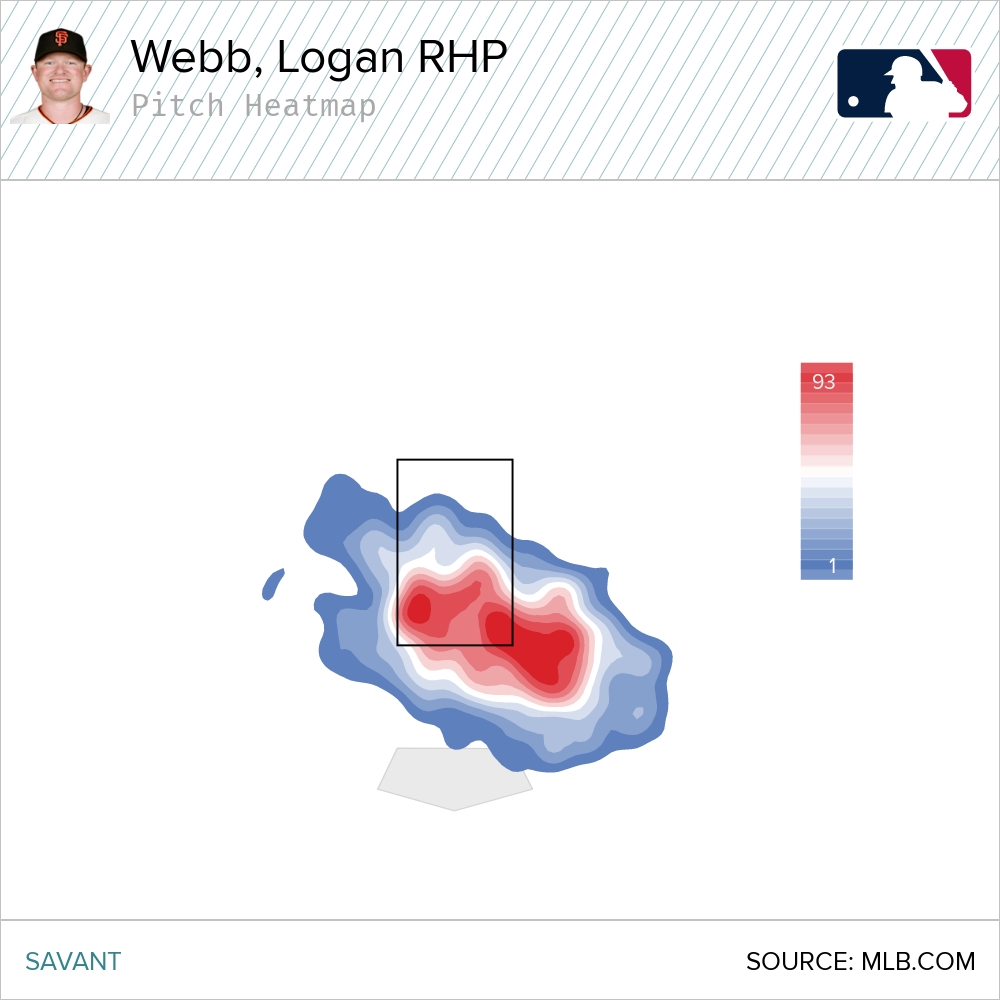
Now here is 2022:
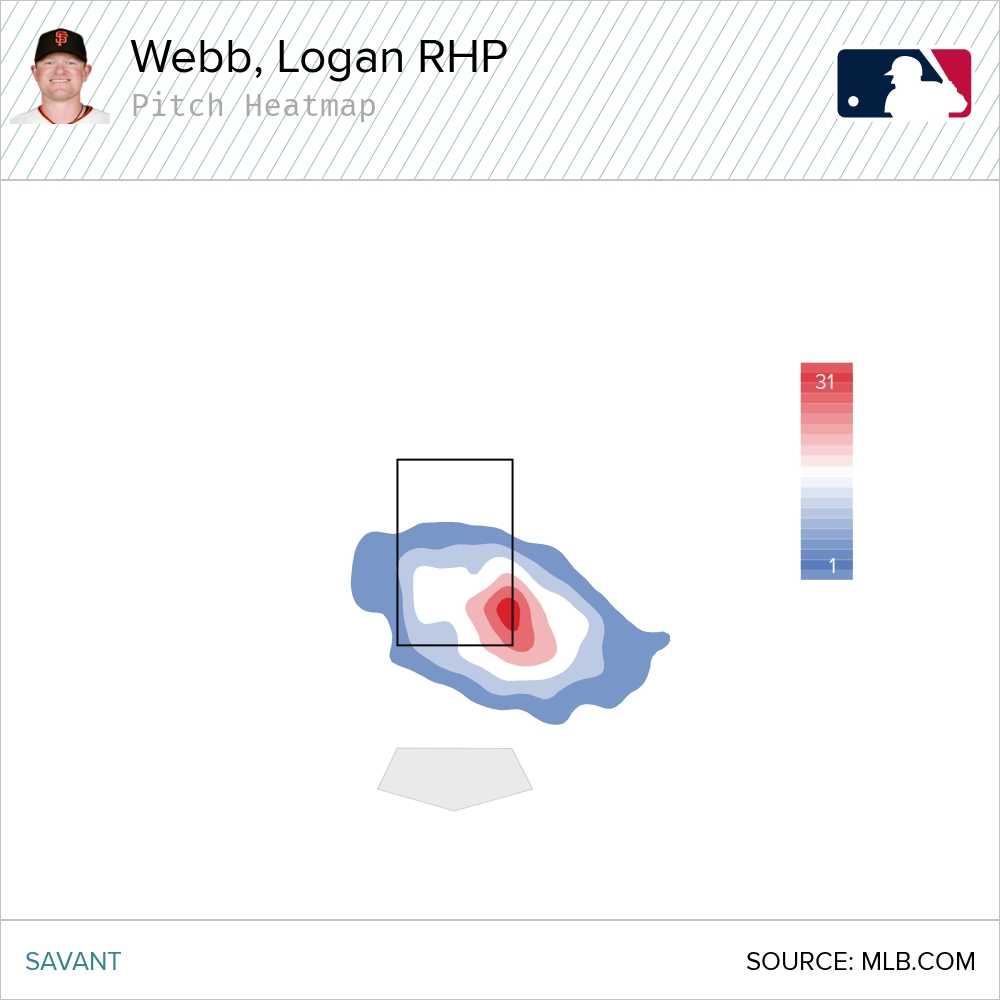
Two main takeaways:
1: In order to get swing and a miss action on his slider, Webb needs to keep it down, below the zone, that big area of red down and away to righties, and back foot to lefties, was the big difference maker for him in 2021.
2: The heatmap on 2022 doesn’t scream command issues. In fact, Webb was very precise about where he located that pitch, and more in the edge of the zone, on a higher location plane, he induced a ton more batted balls, but still accumulated the outs.
It is my theory that Webb deliberately went to this usage of the slider to make up for a more hittable sinker. If you’re tossing meatball sinkers at the heart of the plate, batters are less likely to chase sliders that far out of the zone.
Take a look at this usage rate table, and batted ball events.
That is not linear growth. Webb’s secondaries bailed him out in 2021. If he gets the command back on his sinker and is able to live on the corners in 2023, he should be able to regain most of that whiff rate on his slider, as this appeared to be a conscious move on his part. In the case that he can’t and still struggles to locate that sinker consistently, the Giants’ ace has proven himself adept enough to adjust to that, with an arsenal capable of compensating for a non-ideal scenario.
Logan Webb most certainly has seen his hype take a bit of a dive, after all, it is easy to get startled when any pitcher, regardless of his final success, sees his K rate drop from 26.5 to 20.7, but I hope we were able to better explain just what exactly happened, and maybe not turn you off Webb completely. With three plus pitches, and a solid foundation against right-handers, Webb is still a stable arm, and the path to regaining some of those strikeouts isn’t as torturous as one may assume.

